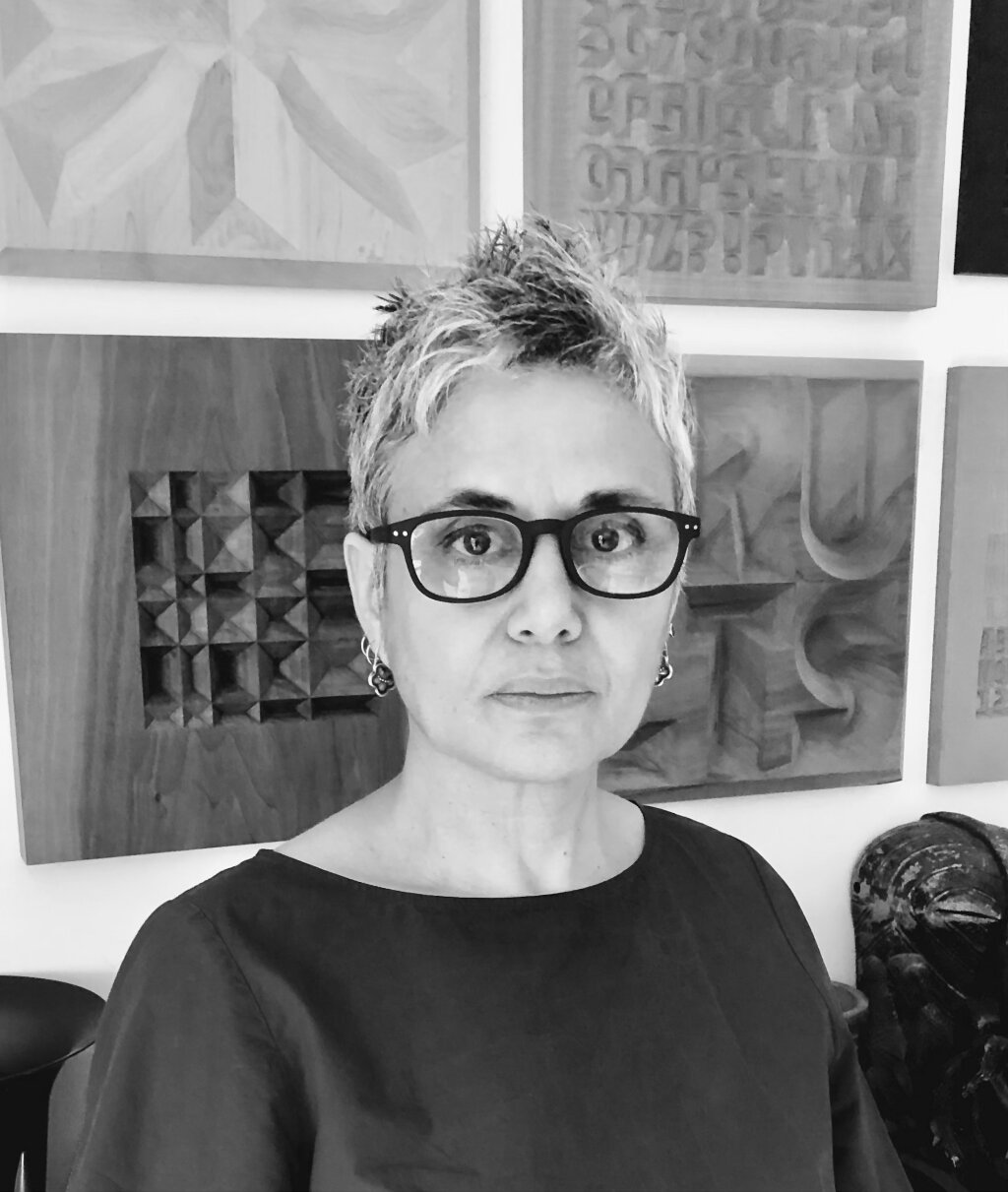Dr. Huda Smitshuijzen AbiFarès is the Founding Director of the Khatt Foundation and Khatt Books publishers. She holds degrees in design and design history from Leiden University (PhD, 2017), Yale University (MFA, 1990), and Rhode Island School of Design (BFA, 1987). She was a jury member of the Third Jameel Prize for Islamic Art and Design 2013 (Victoria & Albert Museum, London), and member of the grants selection committee for Mondrian Foundation (2011-2012) & The Netherlands Architecture and Design Fund (2013). She is member of AGI (Alliance Graphique Internationale). Dr Smitshuijzen AbiFarès specializes in multilingual typographic research and design, with focus on Arabic typography and design history. She has taught design and typography courses in the Arab world, The Netherlands, and internationally since 1994. She has published several books and essays on typography and design from the Arab World, and contributed essays to professional and academic publications. She is the author of Arabic Typography: A Comprehensive Sourcebook (2001), Typographic Matchmaking (2007), Typographic Matchmaking in the City (2011), Arabic Type Design for Beginners (2013), Nomadic Traces: Journeys of Arabian Scripts (2019), Kameel Hawa: The Art of Shaping Arabic Letters (2019), Typographic Matchmaking in the Maghrib (forthcoming), The Catholic Press of Beirut: A Printing and Design Legacy in the Arab East (2023), and Mouneer Al-Shaarani. Against the Grain: Exploring the Scope of the Arabic Letter (2023). She works as and independent design curator, researcher, writer, designer, and publisher.
Dr. Huda AbiFarès
Arabic derived Scripts Script specialist
The Arab and Persianate world was for millennia a region with porous borders, which in time and through cultural exchanges has contributed to shared visual and artistic traditions. In the post-Islamic era, the Arabic script was adapted to writing the various languages of this region that spreads from Central Asia to North Africa. It also acquired a venerated status and writing beautifully became the highest form of artistic achievement. After the nineteenth-century and the post-colonial era, the region was parceled into smaller national borders that became the modern countries known today. Though separated by new national borders, the Arabic script remained a binding agent across this ethnically, linguistically and religiously diverse region. The art of calligraphy flourished and spawned a diversity of inventive styles and aesthetic explorations. The legacy of older calligraphy masters has had reverberations through contemporary Arab and Persianate cultures, and continues today to inspire generations of artists and designers.
Inner structures are often hidden systems or mechanisms that support distinct elements or components and integrate them into a meaningful whole. The notion of inner structures in graphic design from Arab and Persianate cultures references the binding structures embodied in a common script (the Arabic script and all its regional derivatives), and a historically intertwined cultural heritage. Inner structures in typographic and graphic compositions are conveyed to the beholder through an outer visual rhythm. This outer rhythm is the ideas that spread and create ripple effects in society, moving us to action or tears, and transporting us to higher levels of understanding and inspiration. It is also the cadence of sound (music and poetry), outwardly visualized through the movement of graphic elements, letters, shapes, textures and colors.
This talk will present the traveling exhibition Inner Structures – Outer Rhythms that celebrates a selection of graphic and typographic works from the SWANA (Southwest Asia and North Africa) region. The broad themes of the exhibition will be explained while highlighting the innovative approaches in lettering and typeface designs evident in the various graphic design projects on display.
The exhibition is on view at the Museum voor Kunst und Gewerbe Hamburg (MK&G Hamburg) until 31 May 2025.
